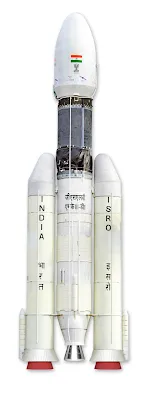ISRO has updated deadlines for dispatches of its human spaceflight missions and the Chandrayaan-3 lunar landing following COVID-19-related postponements.
The Indian Space Research Organization (ISRO) was focusing on August 2022 for the dispatch to check the 75th commemoration of Indian autonomy. Anyway the main human spaceflight showing will currently trail a second uncrewed experimental drill presently got ready for 2022-23, executive K Sivan has said.
ISRO is focusing on a first uncrewed dry run in December this year. The mission will include human-appraised Geosynchronous Satellite Launch Vehicle Mark III rocket with an adjusted upper stage viable with a team module and group get away from framework, as indicated by Times of India.
The first uncrewed mission was at first wanted to dispatch in December 2020, following the proper declaration of the Gaganyaan project in August 2018. India had toward the end of last year expressed that the Gaganyaan venture will be "marginally postponed" because of COVID-19.
The initially manned mission will convey three space travelers with one reinforcement. Four pilots chose for the program are partaking in space traveler preparing in Russia.
India is meaning to join Russia, the United States and China as the solitary nations to have accomplished free human spaceflight capacities. The nation is additionally at this beginning phase looking past low Earth circle. India's Department of Space as of late delivered the draft "People in Space Policy" into the public area for remarks and proposals in front of potential bureau endorsement.
The report expresses that the Humans in Space Policy "focuses on supported human presence in space as an instrument for improvement, advancement and encourage joint efforts in arrangement with public interests."
In seeking after the draft the Department of room would be required to "characterize [a] long haul guide for supported human presence in low earth circle and undertaking investigation missions past low earth circle."
Fundamental advances for empowering supported human presence in LEO and past as expressed to incorporate regenerative life emotionally supportive networks, meeting and docking frameworks, inflatable territories and extravehicular action suits.
Using global participation, creating biological systems, empowering business venture and improving public contribution are likewise noted as key assignments.
Second lunar landing endeavor deferred
Chandrayaan-3, India's third mission to the moon, is probably going to slip to 2022, ISRO executive K Sivan disclosed to Press Trust of India news office.
The mission will include a lander and a little meanderer like Chandrayaan-2, yet no orbiter.
The 2019 Chandrayaan-2 mission effectively put an orbiter around the moon however the arrival endeavor finished in loss of correspondences notwithstanding an ostensible plummet down to a height of around two kilometers.
Chandrayaan-3 is relied upon to focus on a similar landing site, around 70.9 degrees south of the lunar equator. The Chandrayaan-2 orbiter will work as a correspondences hand-off for the Chandrayaan-3 lander.
On the off chance that fruitful Chandrayaan-3 could make India the fourth nation to effectively delicate land on the moon.
K Sivan told press that the mission and its arranged achievement will shape the premise of ISRO interplanetary missions. India is likewise arranging a Venus orbiter for dispatch in 2024.
India is in the interim getting ready for the dispatch of the PSLV-C51 (the 53rd Polar Satellite Launch Vehicle mission) from Satish Dhawan Space Center, Sriharikota, at 10:24 a.m. Eastern, Feb. 28.
The Amazonia-1 optical earth perception satellite of National Institute for Space Research (INPE) of Brazil is the essential payload. It will be joined by 18 more modest traveler satellites.
The mission will be India's first dispatch of 2021, following a COVID-19-hit 2020.







